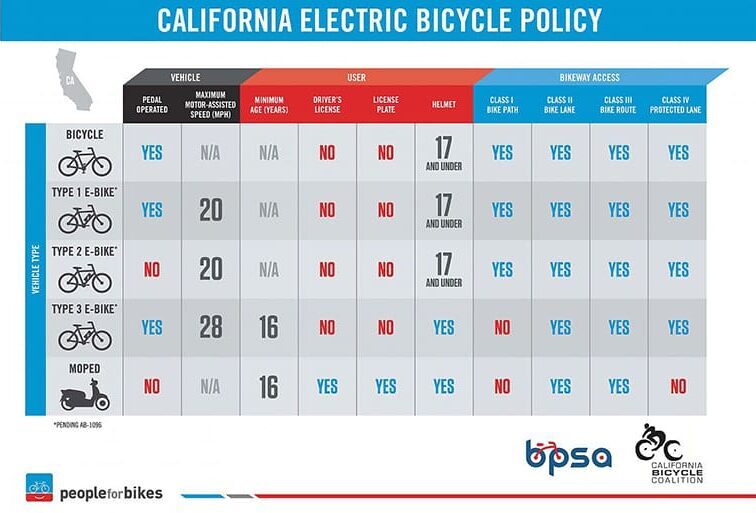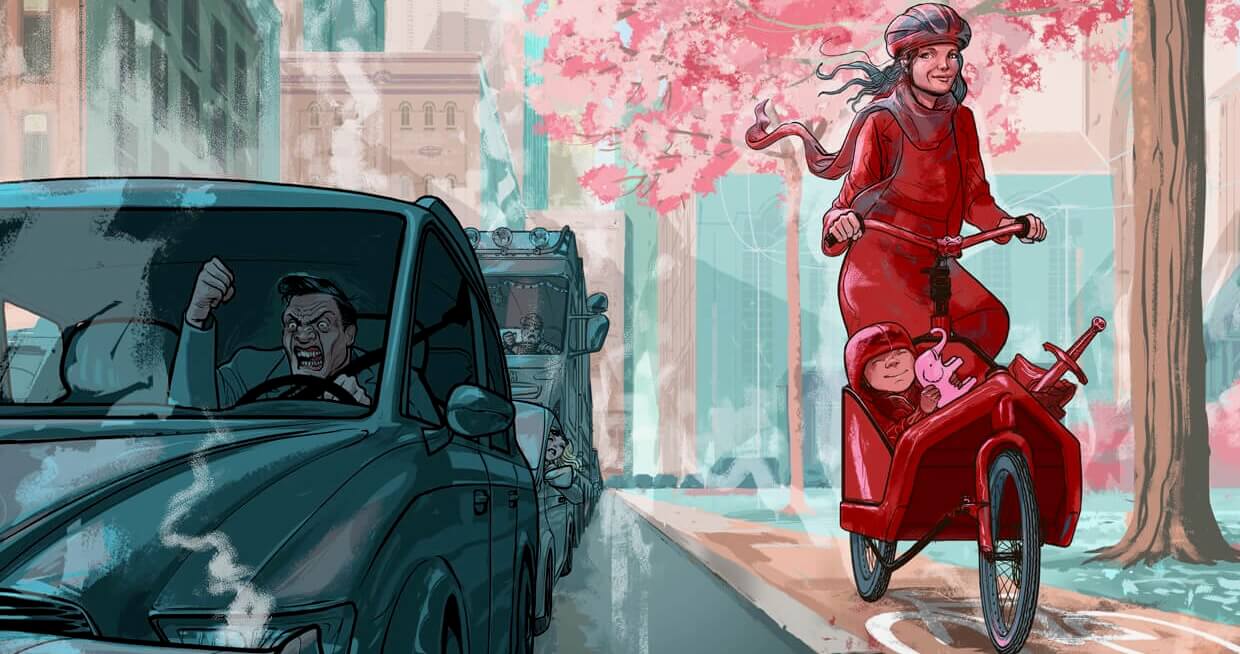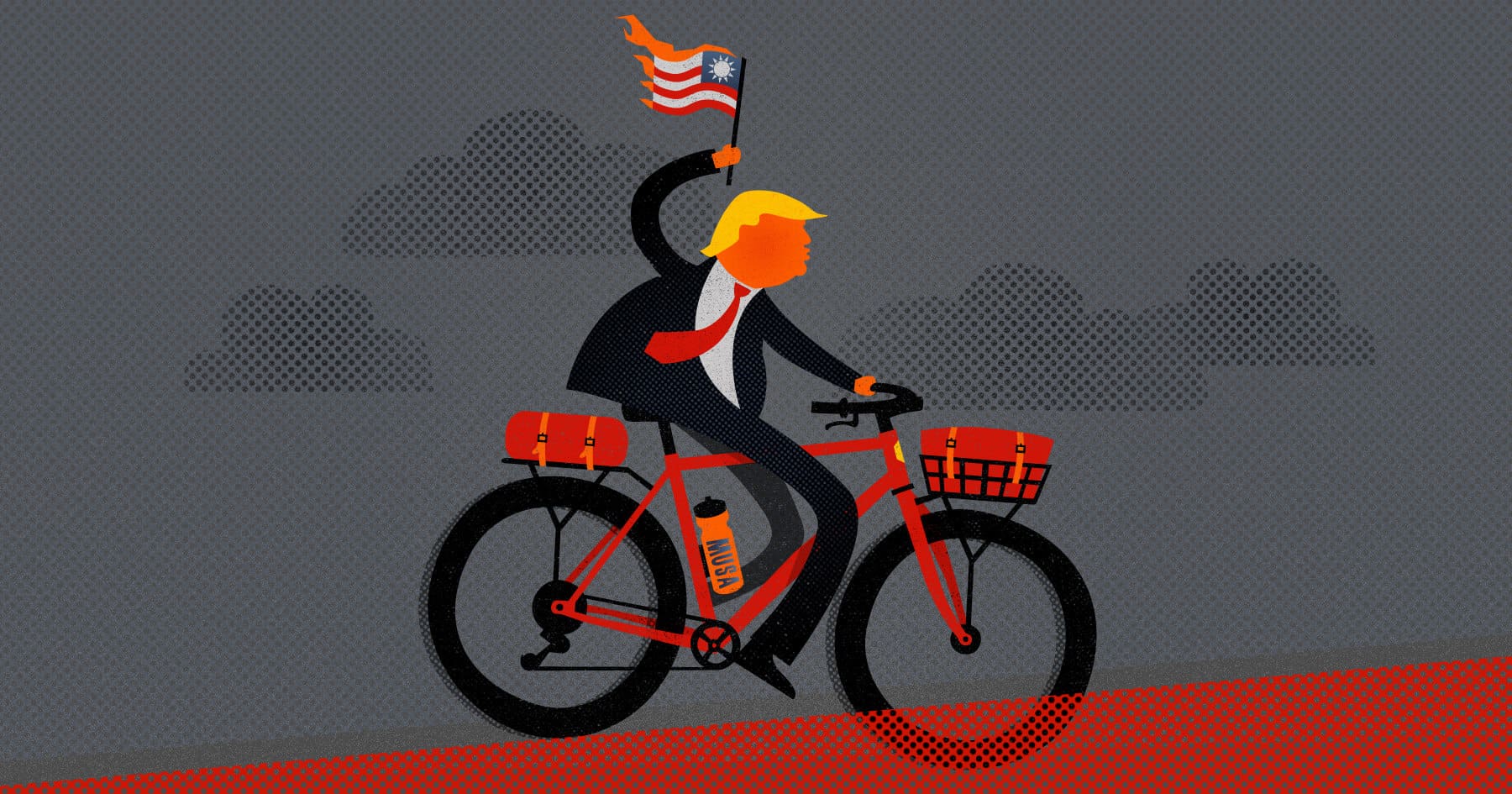Parents who own an electric cargo bike were surprised to read a Toronto Star article suggesting these bikes are no longer permitted to carry passengers. Retailers across Ontario were surprised too. The facts are messy, but here’s the short version: Bill 282, passed in 2021, erased restrictions on carrying passengers under 16, but that section was never proclaimed into law. For years, everyone assumed regulations would follow – until 2024, when the province quietly shifted gears with Bill 197. That bill promised new e-bike categories, but we have yet to see them.
The Problem With E-Mopeds
Having worked closely with the Ministry of Transportation on both Bill 282 and the Cargo Bike Pilot, our read is that calling the current situation a “ban” oversimplifies the current state of affairs. For instance, both Bill 282 and the Cargo Bike Pilot explicitly allowed passengers on e-bikes, and nothing in Bill 197 suggests the Ministry is about to reverse course. Another indication is that the government’s e-bike webpage still makes no mention of any restriction on passengers. (Editors’ note: this has been the case from July 2024 through September 3, 2025). Our read – and forgive us if this is too charitable – is that the government appears to be pausing to reassess how different types of e-bikes should be regulated before finalizing new rules.
When we first worked with the MTO in 2021, their primary concern was not family cargo bikes but e-mopeds – machines that look like Vespa scooters, employ a throttle, and have pedals that are legally decorative. The challenge was figuring out how to regulate these separately from regular-looking electric bikes that also have throttles. In the process, the MTO treated all regular-looking e-bikes the same, while differentiating e-mopeds using tertiary categories like aesthetics. This led to absurd distinctions: regular bikes were supposedly identified by “exposed frames and forks” – a criterion that was neither accurate nor enforceable.
Pedal-Assist vs. Throttle: A Critical Distinction
We believe the subsequent explosion of throttle-assisted bikes used by food delivery riders has forced the MTO to consider differences even within “regular-looking” e-bikes. The core issue is the throttle. A throttle-assisted bike allows a rider to access full motor power without pedaling, while a pedal-assist bike provides motor support only when the rider pedals.

People for Bikes has long recommended a class system to capture this difference: Class-1 is pedal-assist, Class-2 includes a throttle, and California has added another class for e-mopeds, recognizing they are functionally distinct. The distinction matters because, on Class-2 bikes, the throttle can be removed in minutes, leaving a safe Class-1 bike underneath. E-mopeds, by contrast, have nonfunctional pedals that are entirely disassociated from the pedals. Class-2 bikes are therefore the problem: leave the throttle in place, and they behave unpredictably in bike lanes; remove it, and they become safe pedal-assist machines.
Legislative Voids
The reason this distinction is critical is safety. Throttle-assisted bikes allow riders to access the motor’s peak power instantly, which changes the behavior of the machine: it accelerates faster, carries more momentum, and acts less like a bicycle and more like a moped. In the Netherlands, Class-1 bikes are capped not only in top speed but also in accelerative torque, so a bike always behaves within the margins of a regular bicycle. Whether leaving a stoplight or cruising a bike lane, the machine stays in harmony with other cyclists. A throttle breaks that constant, pushing speed and thrust beyond what infrastructure – and the families who rely on it – can safely handle.
The Fireline: A Battery of Reasons to Rethink E-bike Legislation
So is this a ban? From what we can see, it is not, at least not in any enforceable sense. It is more accurately described as a legislative void, one that will persist until Ontario distinguishes safe pedal-assist bikes from throttle-driven bikes and e-mopeds. In our opinion, underage passengers should not be allowed in any throttle-assisted bike, whereas pedal-assist bikes are designed with safety fully accounted for. So, we’re all good for a pause, even if these days it can be read as conspiratorial, coming from the Doug Ford government.
The Cargo Bike Pilot
One interim law that can offer peace of mind is the Cargo Bike Pilot. When Bill 282 was first proposed, the province also launched the Cargo Bike Pilot. The pilot allowed passengers in proper seats with helmets and was never revoked by Bill 197. The owners of Pedaal and London Bicycle Café were consulted because of our experience selling cargo bikes to families and commercial operators like FedEx. Right away, the Cargo Bike Pilot was something of a hot mess. Originally, it seemed designed for commercial operators like FedEx using big bikes like the Fulpra. Early drafts, however, defined a cargo bike as any electric bike with a basket – potentially sweeping up countless regular e-bikes into a temporary legal experiment. Some clarity was clearly needed.
We were pleased to see that the same concession for passengers in e-bikes from Bill 282 carried over into the pilot. But, the real focus of the initiative was commercial cargo bikes, and one of the clearest ways to distinguish them from family bikes was by weight. We recommended defining cargo bikes according to Gross Vehicle Weight (GVW): bikes over 300 kg including rider and cargo would be commercial, under that, regular bikes. The MTO rejected this approach and instead defined cargo bikes based on the bike’s own weight. Working with the MTO, we found most family bikes fell under 55 kg, while commercial cargo bikes exceeded it. Under the pilot, bikes below 55 kg were treated as regular e-bikes; those above as cargo bikes. This would have allowed family bikes to fall under Bill 282 while commercial models like the Fulpra were regulated separately.
However, the Cargo Bike Pilot never clarified what counts toward the 55 kg “bike weight.” Accessories like cargo boxes, racks, locks, canopies, could easily push a bike over the 55kg limit, and there is no guidance on what counts as part of the bike versus cargo. Enforcement would require weighing bikes at the roadside, and that simply won’t happen. Given this lack of enforceability, most family cargo bikes could arguably fall under the pilot.
Bikes Help Everyone
Bill 197 effectively puts much of e-bike legislation into limbo. One thing is clear: Ontario needs proper rules for e-bikes, and we agree. Having worked closely with the MTO on Bill 282 and the Cargo Bike Pilot, we know their main concern has been throttle-assist bikes, battery regulations – especially those that look like vespa scooters, with pedals that are nearly impossible to use. Any new legislation should clearly separate these from true pedal-assist bikes, where the motor only assists pedaling rather than replacing it. Given the progress in Bill 282 and the Cargo Bike Pilot to allow passengers, we are confident that future rules would retain this improvement for families.

This is also a Federal issue. In 2021, the Federal Government repealed its definition of e-bikes, stepping back from a regulatory role. This has left Ontario to navigate a patchwork of rules. Our industry needs to step up too. For years, the bikes causing safety concerns in bike lanes have been internet-sold throttle-assist models, not the pedal-assist bikes from local stores. Quality is one concern—our bikes don’t catch fire—but safety is the main issue. In the EU, any bike that can operate without pedaling is legally considered a motor vehicle. As the MTO works to define the variety of e-bikes already in use, we hope they continue to listen to experts like Jamie Stuckless. Above all, families and riders need clarity—and fast. It has been an unlegislated rollercoaster so far.
Do You Need Electric?
At Pedaal, we believe electric cargo bikes are game-changers for urban families living within the “last mile.” An electric cargo bike does three things: it neutralizes the weight of the bike itself, flattens hills, and shrinks longer distances. For families with heavier bikes, hilly cities, or longer commutes, an electric cargo bike makes sense. But in a city like Toronto, most of our customers live within a small bikeable radius. They need something that covers distances too far to walk but too short to drive. For them, a bike that shrinks long distances or powers up hills isn’t always necessary.

Many people choose electric cargo bikes simply because the bikes are so heavy. Brands like Urban Arrow and Riese & Müller start around 100 lb, while Trek’s front-loading cargo bike reaches 165 lb. The Danes, who invented the two-wheeled cargo bike, marvel at this. (See also the recent Babboe cargo bike recall.) Bullitt, from Copenhagen, makes a non-electric cargo bike that weighs only 45 lb. This lighter weight often removes the need for power assist. Bullitt bikes are safe, adaptable, and versatile. They suit a wide range of riding styles, making them a popular choice for customers who are happy to pedal on weekends but need a reliable, everyday workhorse that doesn’t cost a mint.
Learn More





